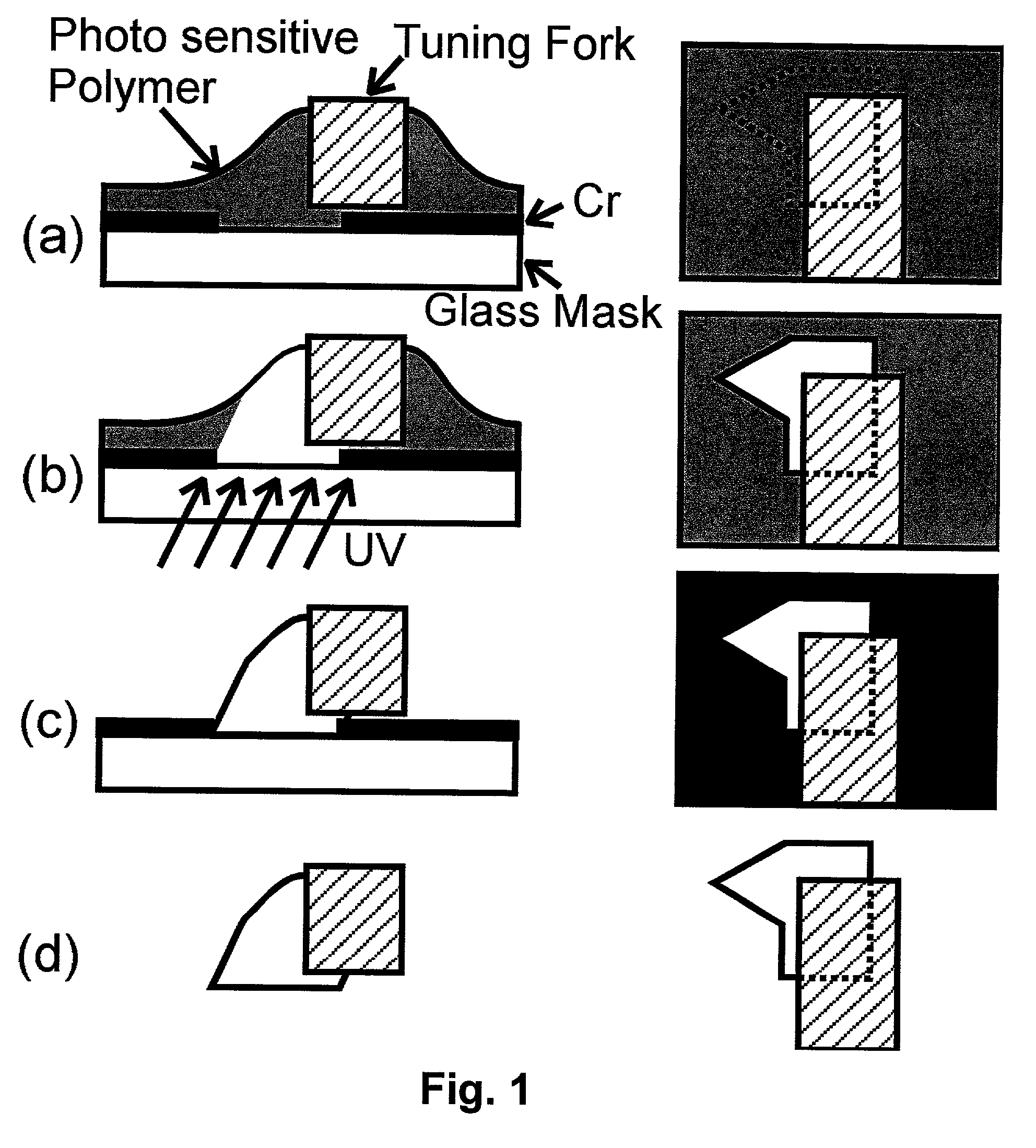Scanning tip and process for its production and use, particularly for a scanning probe microscope
- Summary
- Abstract
- Description
- Claims
- Application Information
AI Technical Summary
Benefits of technology
Problems solved by technology
Method used
Image
Examples
Embodiment Construction
[0021] In the following, an exemplary embodiment of the invention is described in greater detail using the drawing in which FIGS. 1a-1d show various processing steps, and finally the result of these steps.
[0022] First the mask is prepared. As mentioned above, for the utilization in an AFM the bending radius of the scanning tip is the deciding quality criteria: the smaller, the better. The sharpness of the tip depends primarily on the measures and the layout of the masks used. A quartz mask is best suited for an optimal lithographic resolution. The best results were achieved in a square 5-inch mask, divided into four sections. This is called for since
[0023] a) the mask must be small to such an extent that it fits into the narrow space of the aligning device used, when the latter is tilted; and
[0024] b) this way, essentially four identical masks are produced in a single processing step.
[0025] The producer of the masks certifies an opening of 0.7 .mu.m on the most critical position or ...
PUM
 Login to View More
Login to View More Abstract
Description
Claims
Application Information
 Login to View More
Login to View More - R&D
- Intellectual Property
- Life Sciences
- Materials
- Tech Scout
- Unparalleled Data Quality
- Higher Quality Content
- 60% Fewer Hallucinations
Browse by: Latest US Patents, China's latest patents, Technical Efficacy Thesaurus, Application Domain, Technology Topic, Popular Technical Reports.
© 2025 PatSnap. All rights reserved.Legal|Privacy policy|Modern Slavery Act Transparency Statement|Sitemap|About US| Contact US: help@patsnap.com

